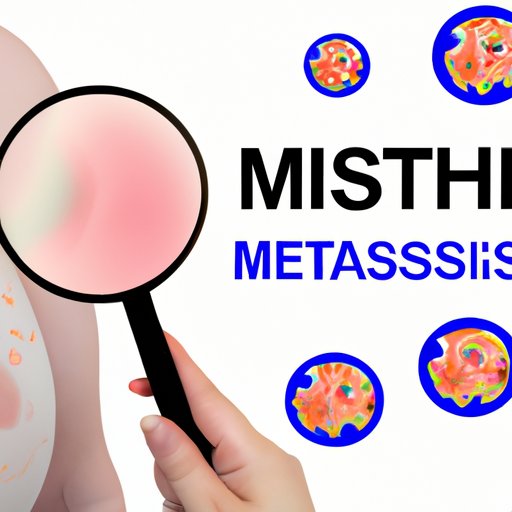
I. Introduction
Mastitis is a painful and common condition that affects breastfeeding mothers. It occurs when breast tissue becomes infected or inflamed, leading to inflammation, redness, and tenderness in the affected breast. Although it can occur at any time, it is most commonly seen in the first few weeks to months postpartum. Understanding the causes, prevention, symptoms, diagnosis and knowing the myths about mastitis are essential in preventing the occurrence of this condition.
II. Causes of Mastitis: Understanding the Risk Factors and Triggers
Mastitis is caused by bacteria entering the breast tissue through the nipple or a break in the skin, which can lead to an infection. The most common bacteria found to cause mastitis are Staphylococcus aureus.
Various factors can increase a woman’s risk for developing mastitis. For instance, cracked nipples, blocked milk ducts, poor breastfeeding techniques, and inadequate breast drainage can all contribute to bacterial buildup. Other factors that can increase the likelihood of developing mastitis include maternal fatigue, stress, and the presence of a weakened immune system. It is also more commonly seen in women who have undergone invasive breast procedures, such as a breast biopsy or lumpectomy.
III. Prevention is Key: Simple Tips to Avoid Mastitis
One of the best ways to avoid mastitis is by maintaining proper breastfeeding hygiene. Ensuring the baby latches effectively and that the breast drains properly. I f the baby is not able to latch correctly, there is a need to seek medical advice. Women should also avoid wearing tight clothing, wearing a bra that provides enough support, and not staying too long without breastfeeding. Women should also avoid using harsh soaps or scrubs on the breasts, as this can lead to further irritation and possible cracks. Additionally, drinking plenty of fluids and obtaining adequate rest can also help to boost the immune system and reduce the risk of infection.
IV. Symptoms and Diagnosis: Identifying Mastitis and Seeking Treatment
The first signs of mastitis usually include pain, swelling, warmth, and redness in the affected breast. Additional symptoms can include flu-like symptoms such as fever, chills, and fatigue. The affected area can also become tender or firm to the touch.
If you think you have symptoms of mastitis, it is essential to notify your healthcare provider promptly, who will examine your breast for signs of infection. The healthcare provider can also recommend diagnostic tests, such as a breast ultrasound, to rule out more severe underlying conditions.
If the condition is identified early, it can be treated effectively with antibiotics and self-care remedies such as application of warm packs, getting adequate milk drainage through breastfeeding or pumping, and staying hydrated. If left untreated, mastitis can result in abscess formation or sepsis, a potentially life-threatening condition.
V. Breastfeeding and Mastitis: How and Why it Happens
Although breastfeeding is the perfect way to nourish an infant, it can result in mastitis. This occurs when bacteria enter the breast ducts through the nipple. It increased likelihood in women with poor latching techniques, leading to inadequate breast drainage. The bacteria can flourish and result in a painful infection. It is essential to bear in mind that mastitis does not reflect a lack of an infant’s feeding. Instead, it is an indication of bacteria on the skin or around the nipple entering the breast.
The best way to avoid developing mastitis while breastfeeding is to focus on proper breastfeeding techniques, ensuring that the baby latches on effectively, and that the breast is drained completely to avoid the proliferation of bacteria. It is also essential to maintain good breast hygiene, such as avoiding the use of harsh soaps and wearing clean breast pads.
VI. Mastitis Myths: Debunking Common Misconceptions about Breast Infections.
Many myths surround mastitis, leading to misconceptions about how it occurs and what to do about it. One of the most common is that a mother can’t breastfeed from an affected breast. The truth is that continuing to breastfeed does not spread infection and may help to resolve the condition faster. Other myths include that antibiotics are not safe for breastfeeding mothers, and that mastitis is a rare occurrence. While antibiotics may not always be necessary, they are typically safe for breastfeeding women, and mastitis is a common occurrence among breastfeeding mothers.
VII. Conclusion
Mastitis is a painful and common condition among breastfeeding mothers. Knowing the symptoms, diagnosis, prevention tips, and myths is essential in ensuring that the risk of infection is minimized. By focusing on proper breastfeeding techniques, maintaining good breast hygiene, seeking prompt medical attention when necessary, and ignoring the myths, women can lower their risk of developing mastitis and ensure that they recover quickly and with minimal discomfort. It is essential to seek medical advice promptly when you suspect the symptoms of mastitis.





